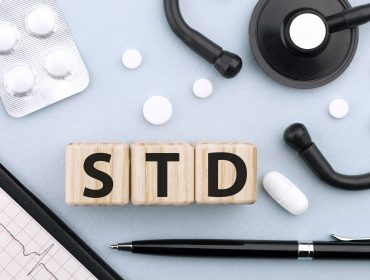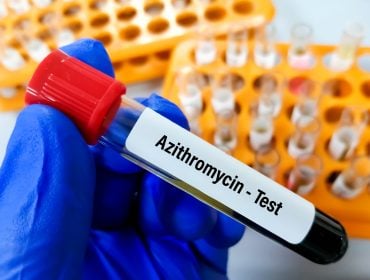How Common Are STDs?
Sexually transmitted diseases (STDs) are a significant public health concern worldwide. These infections can have serious consequences, including infertility, chronic pain, and death. Despite the availability of effective prevention methods and treatments, STDs continue to be a significant health issue. This article will explore the prevalence of STDs in different regions and populations, identify the most common STDs, and discuss strategies for preventing and managing these infections. We hope to answer the question, how common are STDs?
Brief Definition of STDs
STDs are infections that are spread through sexual contact, including vaginal, anal, and oral sex. These infections can be caused by bacteria, viruses, or parasites and can affect both men and women. Some STDs can be cured with antibiotics or antiviral medications, while others are chronic and require ongoing management. Common symptoms of STDs include genital sores, discharge from the penis or vagina, pain during urination or sex, and fever. However, many people with STDs may not experience any symptoms at all. It is essential to get tested regularly for STDs if you are sexually active to prevent the spread of these infections and protect your overall health.
Overview of Prevalence and Statistics
STDs are a widespread health concern, with millions of new cases reported yearly. According to the World Health Organization, more than 1,000,000 sexually transmitted infections are acquired daily globally. In the United States alone, there were over 2.5 million reported cases of Gonorrhea, Chlamydia, and Syphilis in 2019, which is the highest number ever recorded.
Certain populations are at higher risk for STDs, including young adults aged 15-24, men who have sex with men (MSM), and people living in poverty or with limited access to healthcare. However, anyone who is sexually active can contract an STD.
The most common types of STDs include Chlamydia, Gonorrhea, Syphilis, herpes simplex virus (HSV), human papillomavirus (HPV), and human immunodeficiency virus (HIV). Each of these infections has its own unique symptoms, complications, and treatment options.
Prevention strategies for STDs include practicing safe sex by using condoms consistently and correctly, getting vaccinated against HPV if eligible, getting tested regularly for STDs if sexually active or at high risk for infection, and limiting sexual partners. With proper prevention methods and timely treatment when necessary, it is possible to reduce the spread of STDs and protect your sexual health.
How Common Are STDs in the US
The reality is that STIs are becoming increasingly common in the United States. In fact, nearly 50 percent of adults aged between 15 and 24 have at least one type of sexually transmitted infection. This number is even higher for young adults aged 24 to 34, with an estimated 60 percent having a current or past STI diagnosis. Despite this, surprisingly, few people are aware of how common STIs are today. According to a recent survey, only 36 percent of adults were aware that STIs have become more common over the past decade, while 38 percent said they “don’t know enough to say” and 26 percent incorrectly believed that STIs have either become less common or stayed the same. Compared to White adults (33%), Black adults (48%) and Hispanic adults (40%) were more likely to correctly identify the trend of increasing STI prevalence in the U.S. today. It is clear that there is still a long way to go in terms of educating people about STIs before we can prevent their spread.

The Centers for Disease Control and Prevention (CDC) estimates that in 2018, there were 26 million new STD cases in the US, with nearly 68 million infections. Over 50% of these cases occurred in people aged 15-24, and it is estimated that half of all sexually active individuals will have contracted an STD by age 25. HPV is especially widespread, with over 42 million Americans currently infected. Additionally, an estimated 1.2 million have HIV, with 13% being unaware of their status, and half of all gonorrhea infections are resistant to at least one antibiotic. These numbers emphasize the importance of safe sex practices and regular STD testing.
Sexually transmitted infections are a major public health concern in the United States. Every year, there is an estimated 14 million new cases of Human Papillomavirus (HPV), 1.5 million new cases of Chlamydia, over two million new cases of Trichomoniasis, 677,769 new cases of Gonorrhea, 572,000 new infections of Genital Herpes and 133,945 new cases of Syphilis. Additionally, 36,801 people were newly diagnosed with HIV in 2019 and roughly 3,000 people reported newly contracted HBV annually. It is imperative that individuals take proper safety precautions to prevent the spread and contraction of STIs.
Most Common Types of STDs
There are a variety of STDs that can be contracted through sexual contact. The most common STDs include Chlamydia, Gonorrhea, Syphilis, herpes simplex virus (HSV), human papillomavirus (HPV), and human immunodeficiency virus (HIV). Each of these infections has its own unique symptoms, complications, and treatment options.
Chlamydia is a bacterial STD that is most commonly spread via unprotected vaginal or anal sex. It can also be spread through oral sex if there is contact with the anus or vagina. Chlamydia can cause a range of symptoms, including genital pain, discharge from the penis or vagina, burning during urination, and fever. If left untreated, Chlamydia can lead to serious health problems such as infertility and pelvic inflammatory disease.
Gonorrhea is a bacterial STD that is transmitted through unprotected vaginal, anal, or oral sex. It can also be passed between mother to child during childbirth. Gonorrhea often causes no symptoms, but when it does, it may include genital pain, discharge from the penis or vagina, burning during urination, and fever. If left untreated, Gonorrhea can lead to infertility in both men and women.
Syphilis is a bacterial STD that is most commonly spread through unprotected vaginal or anal sex. It can also be transmitted through oral sex if there is contact with the anus or vagina. Syphilis often causes no symptoms in the early stages, but it can eventually lead to a rash on the body, fever, fatigue, muscle aches, and headaches. If left untreated, Syphilis can damage the brain, heart, and other organs.
Herpes simplex virus (HSV) is a viral STD that is transmitted through skin-to-skin contact with an infected person during sexual activity. HSV can cause genital sores and blisters as well as flu-like symptoms such as fever and body aches. There is no cure for HSV infection, but it can be managed with antiviral medications.
Human papillomavirus (HPV) is a viral STD transmitted through skin-to-skin contact with an infected person during sexual activity. HPV often causes no symptoms, but it can lead to the development of genital warts or cancerous cells in the cervix, vulva, anus, or throat. Vaccines are available to help prevent HPV infection, but there is no cure once you have been infected.
Human immunodeficiency virus (HIV) is a viral STD that attacks the body’s immune system and can eventually lead to AIDS if left untreated. HIV is most commonly spread through unprotected vaginal or anal sex, but it can also be transmitted through sharing needles or coming into contact with infected blood. HIV often causes no symptoms in the early stages, but it can eventually lead to fatigue, weight loss, fevers, and diarrhea. HIV treatment involves taking antiretroviral medications, which can help slow the progression of the disease and improve quality of life.
We hope this article better explains how common STDs are in the US. We are here for all your std testing needs, and our blog is intended to educate and inform you on a number of sexual health issues. How Common Are STDs is a common question that we get asked, so we decided to write this post. Our posts are written and medically fact-checked by our marketing and medical team.
Medically Reviewed by Joshua Hwang, MD on March 1, 2023
Secure and Confidential
STD testing services
The fastest results possbile - available in 1 to 2 days

Tagged
Categorized As
Author: STD Check Editorial Team
At STDCheck.com, we go to great lengths to ensure quality content. We’re using our own collection of data. It is not bought or made up for “click-bait” purposes. We don’t entice traffic with cheesy graphics or raunchy headlines. Our information is to promote STD testing, educate people, let go of social stigmas, and bring awareness. We also provide a completely confidential atmosphere through private testing. When we produce an article, it is fact-based. We check it with medical advisors that approve it. Our staff consists of doctors and other medical professionals who peer review the content we make available on STDCheck.com. From all over the world, we have sourced the best and the brightest content developers, including medical professionals, marketing engineers, data scientists, content specialists, and media relations.




